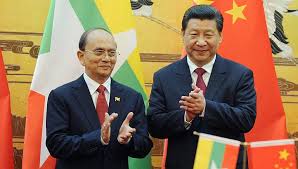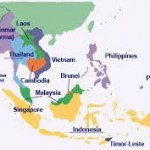
Chinese Investment and Myanmar’s Shifting Political Landscape
by Su-Ann Oh and Philip Andrews-Speed
ISEAS Trends 2015 No.16, (Institute of Southeast Asian Studies, September 2015)
Available at: http://www.iseas.edu.sg/images/pdf/TRS16_15.pdf
Executive Summary
- China has targeted Myanmar’s resources to enhance and provide resources for its economic growth. Myanmar’s proximity and pariah status (before 2010) made it both feasible and convenient for this purpose.
- Chinese investment in Myanmar spiked in the mid-2000s and has continued to increase. The largest increase in approved and actual Chinese FDI over the years has taken place in the energy (oil and gas) and mining sectors.
- The spike in Chinese investment in the mid-2000s applies to the other Southeast Asian countries. If we exclude Singapore, China’s stock in Myanmar was the highest between 2009 and 2012, but this was overtaken by stock in Indonesia in 2012.
- Since 2012, more companies from other countries have had their projects approved in Myanmar; this means that approved Chinese investment (from mainland China) in Myanmar has been fluctuating, and its percentage in total FDI per year is falling.
- There has been a groundswell of opposition to large oil and gas, hydropower and mining projects on the grounds of poor governance (e.g., land acquisition and compensation, the destruction of livelihoods for example), and secretive, inequitable wealth sharing.
- The Thein Sein administration has dealt with these conflicts by suspending projects; establishing an inquiry commission and an implementation committee; re-negotiating contracts and preparing to become a member of the Extractive Industries Transparency Initiative (EITI).
- These unprecedented measures will likely take place on an ad hoc basis rather than across the extractive industry. Dramatic changes to contracts are more likely to take place with Chinese (and other) corporations that are involved in large-scale rather than small-scale projects.
- The changing political circumstances – Myanmar no longer being reliant on a handful of countries for strategic and financial support and the necessity of taking into account the wishes of its electorate – means that the political landscape has shifted under the feet of stakeholders.
- Chinese firms have responded by acceding to demands for improved profit-sharing and environmental and corporate social responsibility programmes. They have also begun diverting their interests to Indonesia and other Southeast Asian countries and are being cautious about investing in large projects in Myanmar.
- Given the deep strategic inter-dependence between Myanmar and China, the changed political circumstances will take the gloss off the previous exclusive bi-lateral relations between the two countries but is unlikely to prevent them both working hard to maintain a good working partnership.





